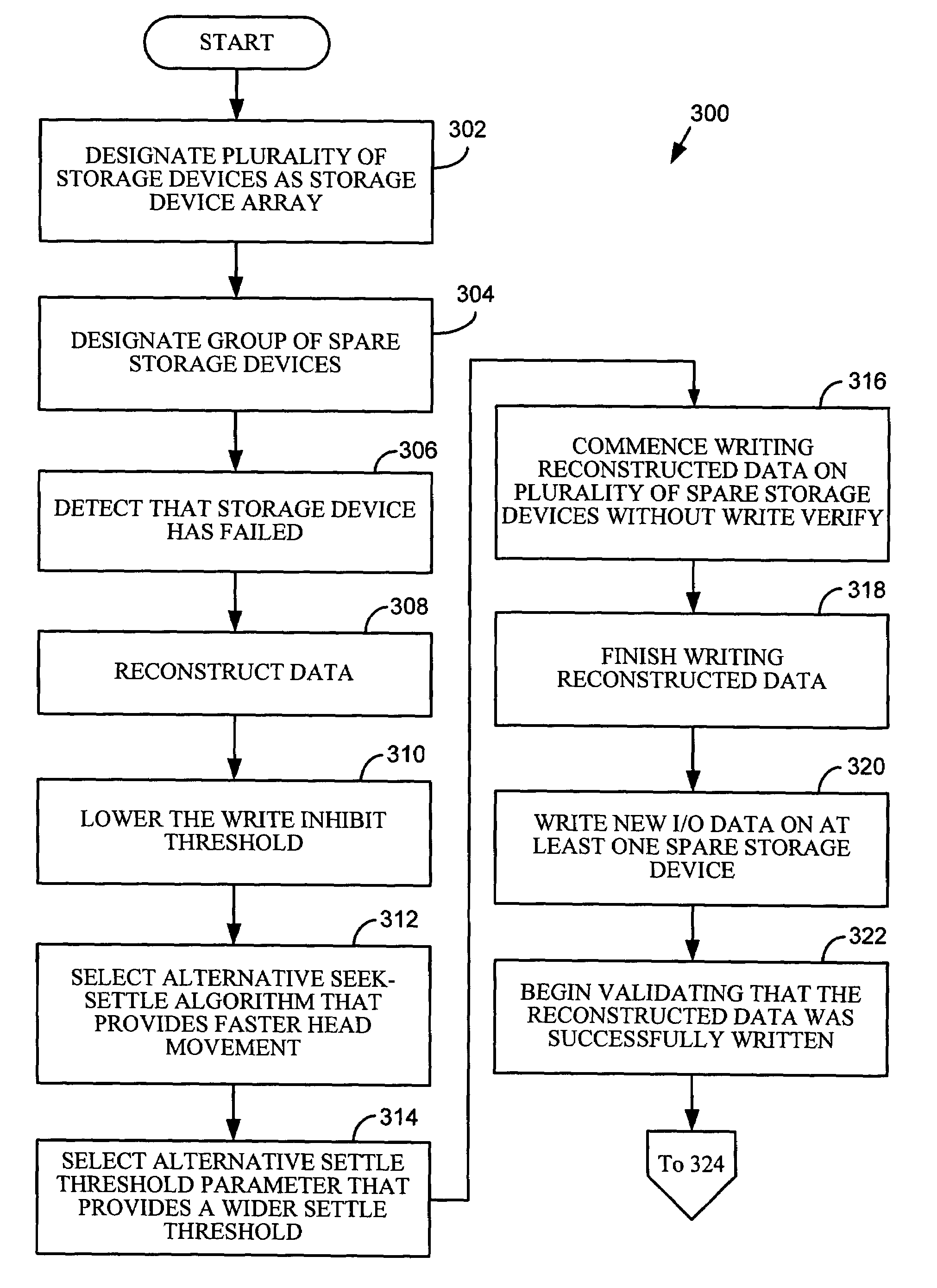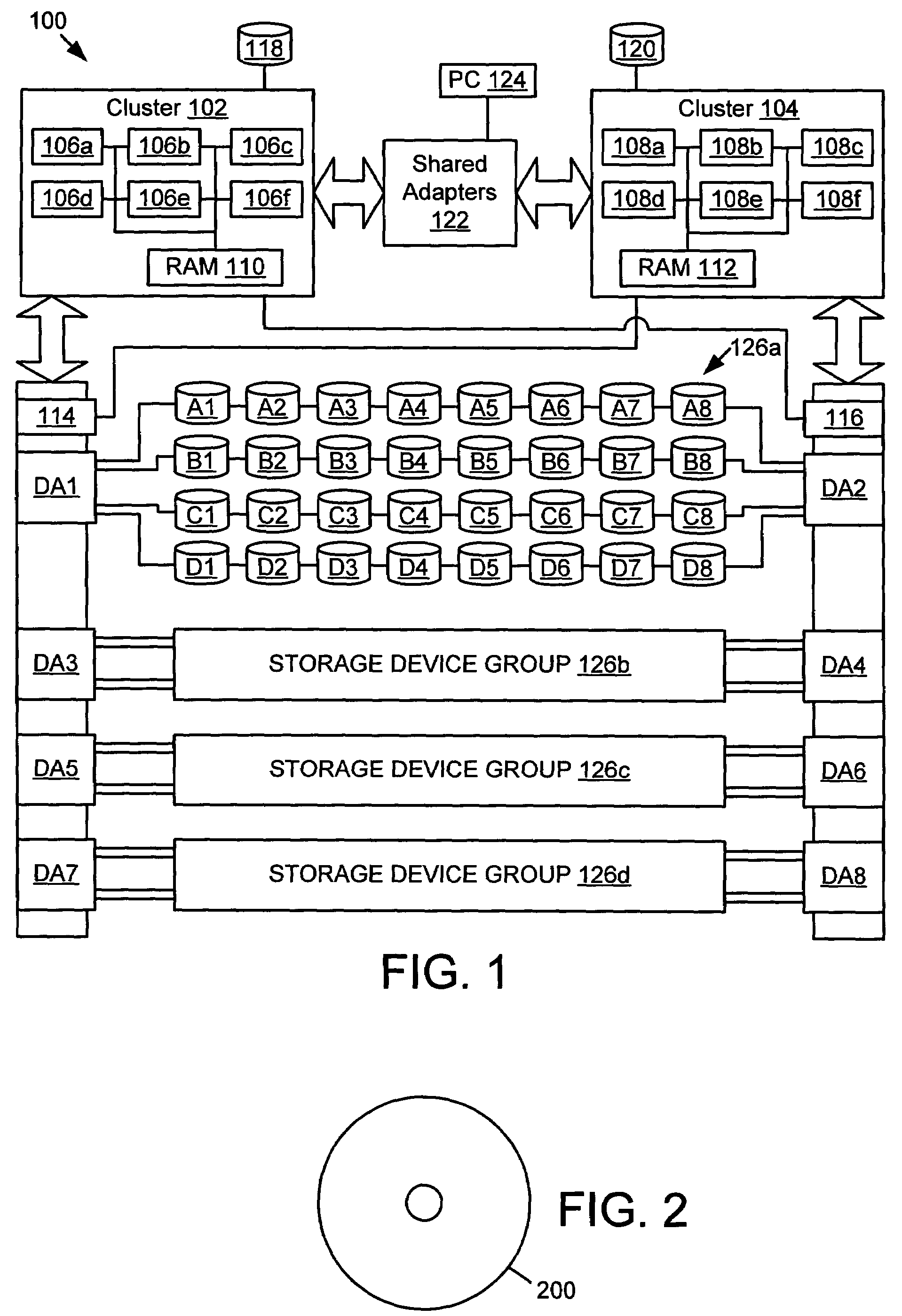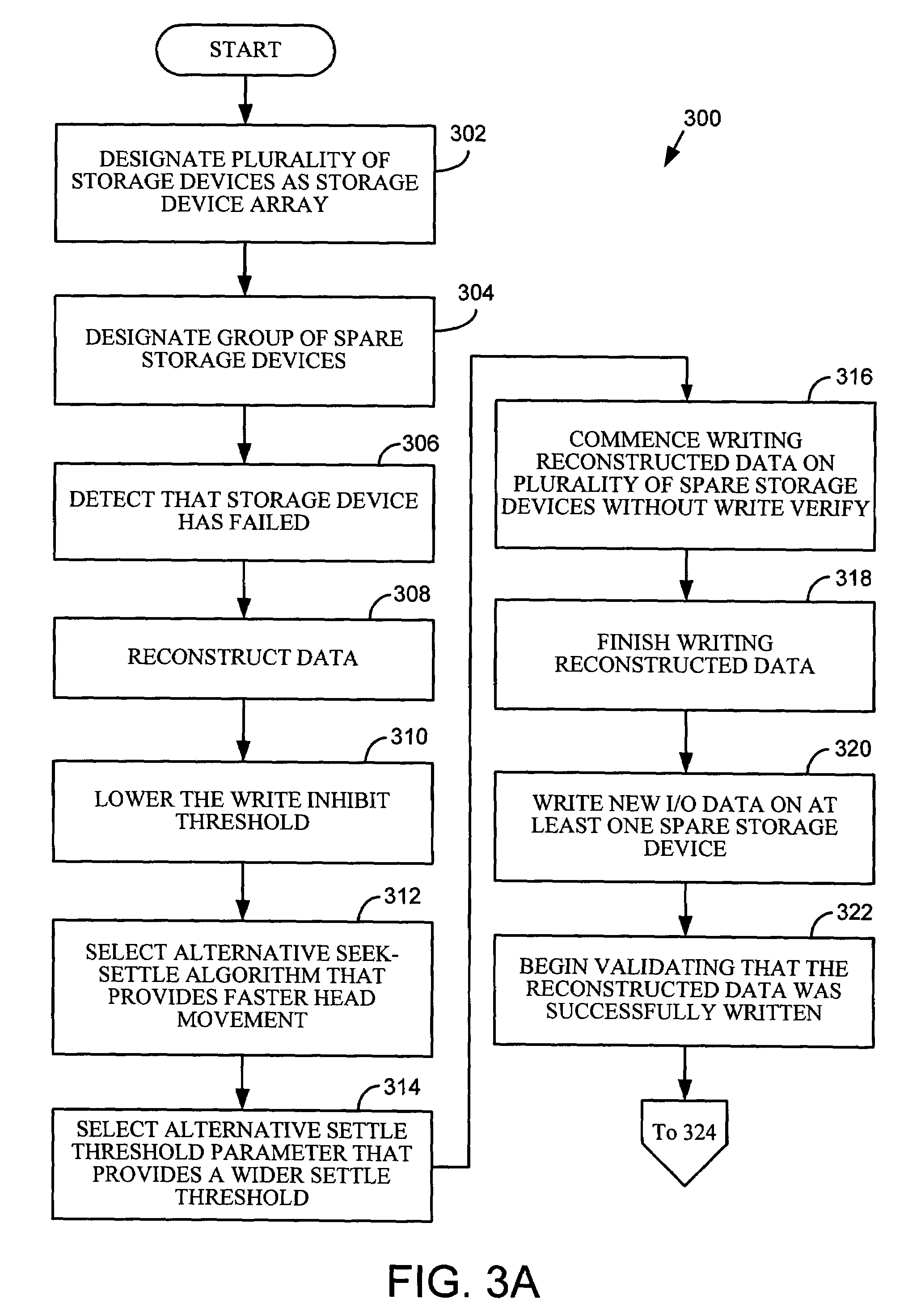Using redundant spares to reduce storage device array rebuild time
a technology of storage device array and spares, applied in the direction of redundant data error correction, fault response, instruments, etc., can solve the problems of single point of failure time window beginning, large drives taking longer to rebuild than smaller drives, and data can be lost in the data sector, so as to reduce the probability of data being lost and reduce the time required
- Summary
- Abstract
- Description
- Claims
- Application Information
AI Technical Summary
Benefits of technology
Problems solved by technology
Method used
Image
Examples
Embodiment Construction
[0015]The nature, objectives, and advantages of the invention will become more apparent to those skilled in the art after considering the following detailed description in connection with the accompanying drawings.
I. Hardware Components and Interconnections
[0016]One aspect of the invention is a storage system that uses redundant spare storage devices to reduce the rebuild time when replacing a failed storage device in a storage device array. As an example, the storage system may be embodied by the hardware components and interconnections of the multi-server storage system 100 shown in FIG. 1. The storage system 100 could be implemented, for example, in a model 2105-800 Enterprise Storage Server, manufactured by International Business Machines Corporation. As an example, the storage system 100 may be used for processing and storing data for banks, governments, large retailers, or medical care providers.
[0017]The storage system 100 includes a first cluster 102, and a second cluster 10...
PUM
 Login to View More
Login to View More Abstract
Description
Claims
Application Information
 Login to View More
Login to View More - R&D
- Intellectual Property
- Life Sciences
- Materials
- Tech Scout
- Unparalleled Data Quality
- Higher Quality Content
- 60% Fewer Hallucinations
Browse by: Latest US Patents, China's latest patents, Technical Efficacy Thesaurus, Application Domain, Technology Topic, Popular Technical Reports.
© 2025 PatSnap. All rights reserved.Legal|Privacy policy|Modern Slavery Act Transparency Statement|Sitemap|About US| Contact US: help@patsnap.com



